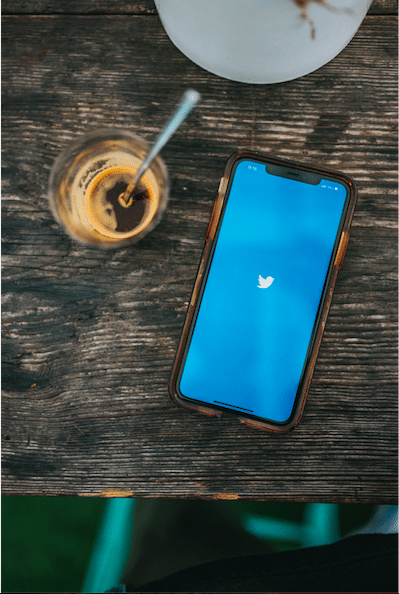by Emily Gilbride
All social media platforms have site-specific etiquette that those working in public relations and communications should be aware of. This week we will look into how to make the most out of Twitter. Twitter has gone from being a site about sharing what you want for lunch to becoming one of the most integral parts of online communication.
Launched in 2006, Twitter has gone on to become one of the most popular social media channels. At the end of 2021 it was noted there are 206 million active users on the platform alone [1]. Additionally, Twitter makes up close to 10% of the world’s overall social media users [2]. Unlike other social media platforms, Twitter is often where breaking news or business news is shared by individual accounts.
Why Twitter?
When asked, close to half of Twitter users said they used the platform to receive news updates, while a third stated that finding out business news was the biggest reason behind being active on the platform [3]. Twitter’s brand name and logo are known everywhere.
Promotional posts on Twitter are extremely attractive because the platform outdoes any other social channel in terms of reach. The total number of people accessing Twitter every month is three times larger than the number of registered users [4]. Meaning, you’re not just reaching Twitter users but you are extending the reach to a wider audience of non-members who scroll through Twitter too.
Connectivity
Twitter is a great platform to use if you wish to expand your reach and connect with people working worldwide in a similar industry. Publicising company developments, blogs, new positions, client coverage and news… basically, posting any kind of relevant content will help you harness online relationships. Even just liking or retweeting a post helps put your name alongside a key message you wish to be a part of.
Pitching to media outlets about our clients is a process we all go through when working in public relations. Some journalists tweet out queries and or call for editorial content or thought leadership articles. However, it is sometimes easy to miss these and they can get lost in a busy feed.
Twitter offers some really great ways to make it just that bit easier to find relevant content. Twitter Lists help you keep tabs on what specific people are tweeting about. You can make these lists public or private and monitor the needs of journalists or bloggers as they often field enquiries on Twitter.
Accessibility
One thing Twitter excels at is its accessibility. It is constantly trying out new ways to ensure tweets can be accessed or utilised by all potential users. In the first ever blog post of this series we discussed alternative text which adds a description to images to ensure those who are visually impaired can interact and be a part of the online conversation.
In June 2020, Twitter launched voice Tweets. They acknowledged that there can be a lot left unsaid or uninterpreted using just text. It’s hoped that voice Tweeting will create a more human experience to listeners and provide a more creative way to express yourself on the 280 character limited microblogging site. Sometimes 280 characters are not enough and some conversational nuances are lost in translation. Each voice Tweet captures up to 140 seconds of audio.
Not only that, voice Tweets provide the perfect opportunity for those with a visual impairment to contribute to the Twitter feed. This feature has been a significant addition for those unable to type via regular keyboards, providing another way to engage with the platform and participate in the wider discussion.
One thing to note is that this feature is not available to everyone. iOS users are the only ones who can record voice Tweets. It’s hoped that Twitter will make it more widely available to Android users in the near future. Make sure to keep your software updated. You never know when it will land!
What sort of content does best?
Each social media platform’s audience has different expectations. Content might do better on one platform rather than the other. There is no right or wrong, nevertheless, there are key statistics we should consider before posting. When Twitter first came out, gaining traffic was simple because you weren’t swallowed up by the millions of users that use it today. Now that more and more people are using the platform, gaining traffic isn’t easy.
As a result, looking into analytics is the best way to make sure your content performs the best it can. It has been found that engagement is 200% higher for tweets with image links [5]. Further, content that includes website links have a retweet rate of 86% [6]. Making your tweet as visually attractive as possible is definitely a must and something to bear in mind everytime you post.
Formatting your tweet is a three step process and something that can be extremely helpful when preparing a tweet. Visually, this formula looks the best on the Twitter feed. Give it a try!
- Question/Setup the topic you will touch upon
- Provide an overview of what you are tweeting about
- Call to action (CTA) encouraging people to click a link to a website or article link
Let’s take a look at one of our tweets promoting our blog. As you can see we have followed the three steps. We have made sure in the first line to make people aware of our new blog. We then provided an overview of the topic and finally a CTA to engage with the blog post and comment any ideas they have.
When is the best time to post?
Another thing to consider is, when does content do best on Twitter? There is not one set time where you know a tweet will receive lots of engagement. From experience, the best way is to try it out on your own and observe your own engagement through Twitter Analytics.
However, there are some recommendations which you can take into account before posting or scheduling your tweets for the week. Helpful online tools such as Hootsuite and ContentCal provide great guideline times. They say the best times to post are on Wednesdays 9am-3pm; Tuesdays through Thursdays 9am-11am.
Key takeaways
Understanding each social media platform is key when it comes to boosting communications. Twitter is constantly adapting to user demands. It is a great platform to harness relationships, widen reach and keep up to date with ongoing industry trends and news. Understanding how to make Twitter more accessible is something that makes the platform most attractive. When we think of communications and public relations Twitter is definitely the first platform which comes to mind.
[2]https://backlinko.com/twitter-users
[3]https://www.statista.com/statistics/276393/reasons-for-us-users-to-follow-brands-on-twitter/
[4]https://blog.hootsuite.com/social-media-users-pass-4-billion/









































